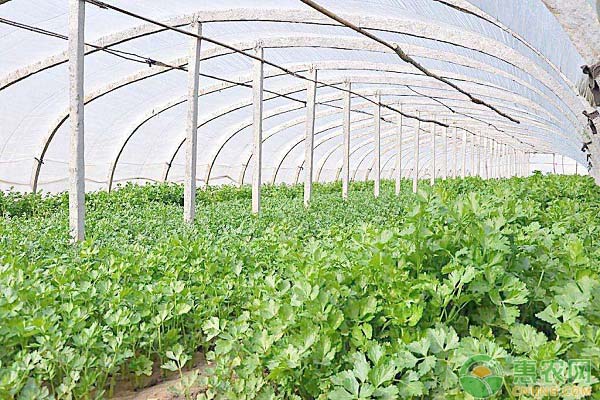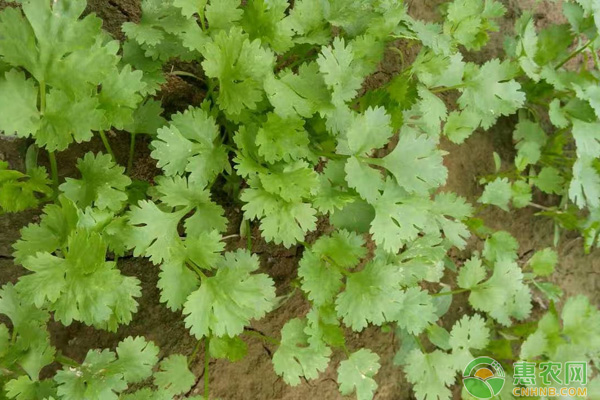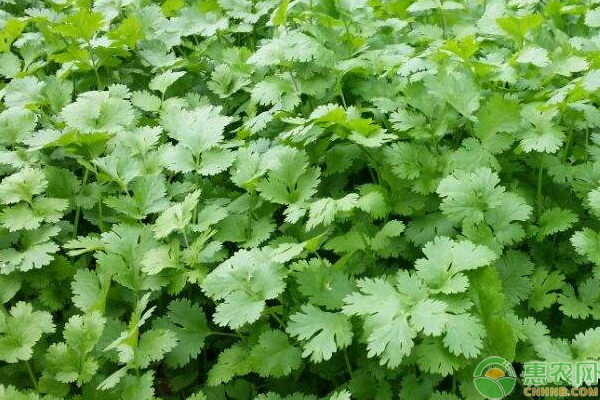Coriander is not only a seasoning vegetable but also one of the must-have dishes of hot pot. Many people like to eat parsley at home. Coriander is rich in minerals, so there are many benefits to eating coriander. In order to obtain high yield, field cultivation management of coriander is critical.

First, the nutritional value
The nutritional value of coriander is very rich, rich in carotene, vitamin C, vitamin B1 and other elements, but also rich in minerals such as magnesium, iron, calcium. It is understood that coriander also has the effect of lowering blood sugar and diuresis.
Second, seedling management
Generally, the coriander will sprout after about 10 days of sowing. If it encounters heavy rain when it emerges, it will easily form the image of soil compaction after the weather is fine. Everyone needs to pay more attention to this. It is recommended that you can water the soil in time to maintain the permeability of the soil in the field. When the parsley grows to four to five centimeters, it must be time and seedlings. The seedlings should be removed from the inferior seedlings with poor growth pattern.

Third, cultivating and weeding
Coriander seedling management, we have to wait for the time to seed, there is another important job is weeding. Strong weed growth will directly lead to poor permeability in the field, to seize the growth and nutrition of coriander seedlings, but also easily lead to the occurrence of pests and diseases. Therefore, if a vegetable farmer finds weeds in the process of planting coriander, he must remember to remove it in time. It is recommended that you manually. Cultivating is a place that everyone needs to pay attention to during the planting process.
Fourth, fertilizer management
The growth period of coriander is not long, generally it is forty days, but if it is slow, it will take about two months. When fertilizing, be early, do not water too much during the seedling period, basically every three or four days to water once.
When the coriander grows vigorously, it is necessary to strengthen the management of water and fertilizer. It can be watered frequently to maintain the humidity of the soil. If fertilization is applied, it can be based on quick-acting fertilizer, which can be combined with watering. Remember to apply the thin fertilizer once in time after harvesting.

V. Pest Control
The most common pests and diseases of coriander are aphids and leaf spot diseases. These two pests and diseases will affect the quality and yield of coriander. The early stage of coriander leaf spot disease can be sprayed with carbendazim liquid and chlorothalonil. The aphid outbreak can be sprayed with imidacloprid and avermectin for prevention and treatment.
Sixth, harvesting period
Coriander can be picked from seedlings to buds.
The above is the field cultivation technique of coriander, and the friends of the farmers who need it can collect the spares, and hope to help everyone in the future planting coriander work!
For the wonderful pictures and popular comments on the cultivation of coriander, you may be interested in the following recommended contents. Welcome to read.
Hematology analyzer is also called clinical blood cell analyzer, blood cell analyzer, blood cell analyzer, blood cell counter. The blood analyzer not only improves the accuracy of the experimental results, but also provides many experimental indicators, which play an important role in the diagnosis and differential diagnosis of diseases. Hematology analyzer is one of the most widely used instruments in hospital clinical testing.
Test items
Blood cell test refers to routine blood test, which is manual operation and counting under the microscope at first. It includes red blood cell, hemoglobin, white blood cell count and its classification, platelet count, etc. There are more than 20 items.
clinical significance
1. The blood analyzer is mainly used to detect various blood cell counts, white blood cell classification and hemoglobin content.
2. Hematocrit: obtained by multiplying the average volume of red blood cells by the red blood cell count.
3. Red blood cell distribution width: represents the degree of consistency of red blood cell size. When the red blood cell size is uneven, the red blood cell distribution width value increases, such as various types of nutritional deficiency anemia.
4. The three average indices of red blood cells are used to identify the type of anemia.
(1) The average hemoglobin content of red blood cells: increased in megaloblastic anemia, decreased in iron deficiency anemia, chronic blood loss anemia, uremia, chronic inflammation.
(2) Mean volume of red blood cells: increase in hemolytic anemia and megaloblastic anemia; decrease in severe iron deficiency anemia and hereditary spherocytosis.
(3) The average red blood cell hemoglobin concentration: decrease in chronic blood loss anemia, iron deficiency anemia; various diseases can be in the normal range. In megaloblastic anemia, the mean red blood cell volume increases, the mean red blood cell hemoglobin amount increases, the mean red blood cell hemoglobin concentration is normal, and the red blood cell distribution width increases.
5. Average platelet volume: the average volume of each platelet, the size of platelets is related to its function.
(1) Increased: seen in patients with idiopathic thrombocytopenic purpura, edema and proteinuria in late pregnancy.
(2) Decreased: seen in non-immune platelet destruction, aplastic anemia, thrombocytopenia repeated infection syndrome, chronic myeloid leukemia, etc.
Automation in Hematology,Automated Hematology Analyzer,Hematology Analyzer Instrument,Hematology Analyzer Product
Jilin Sinoscience Technology Co. LTD , https://www.contoryinstruments.com